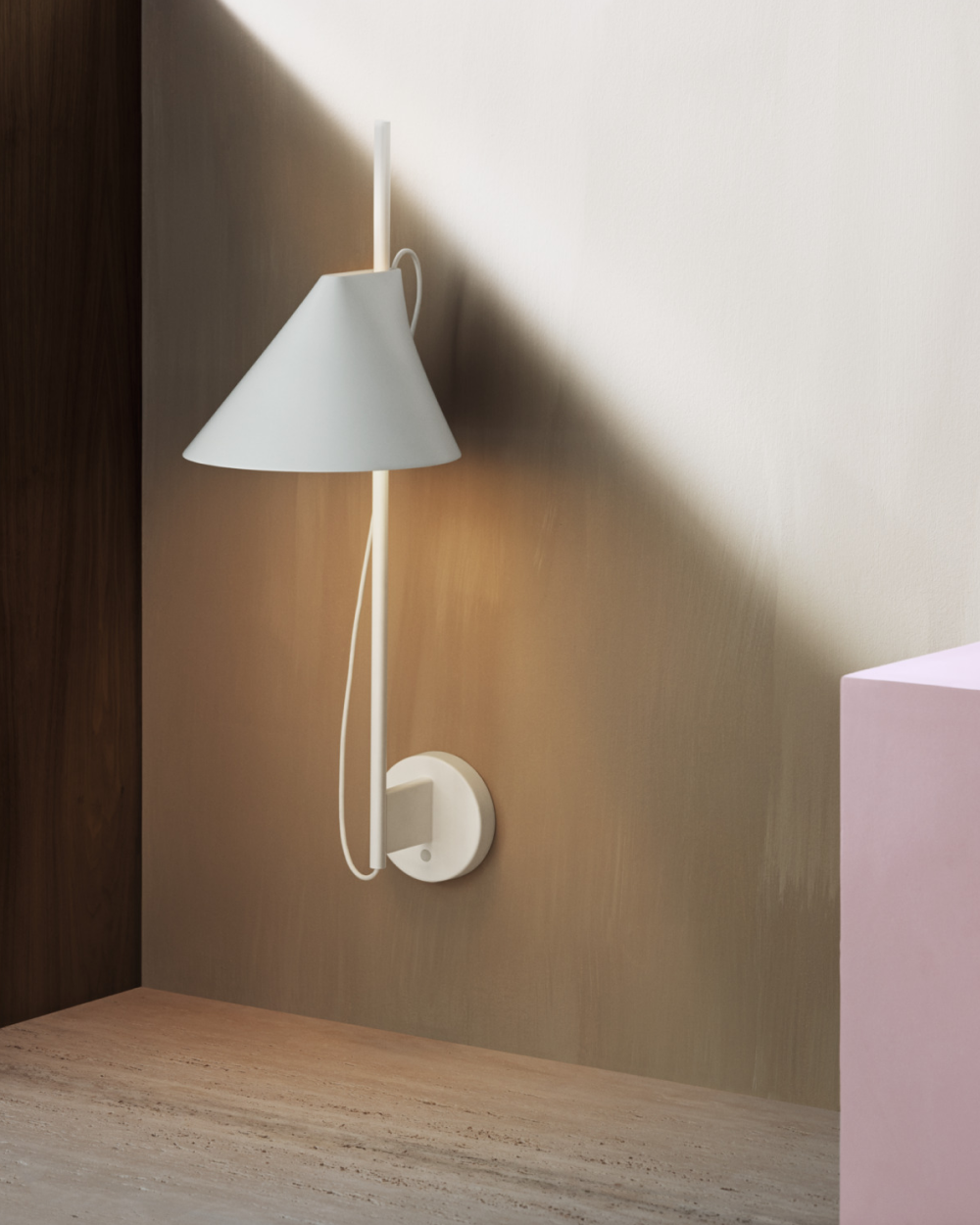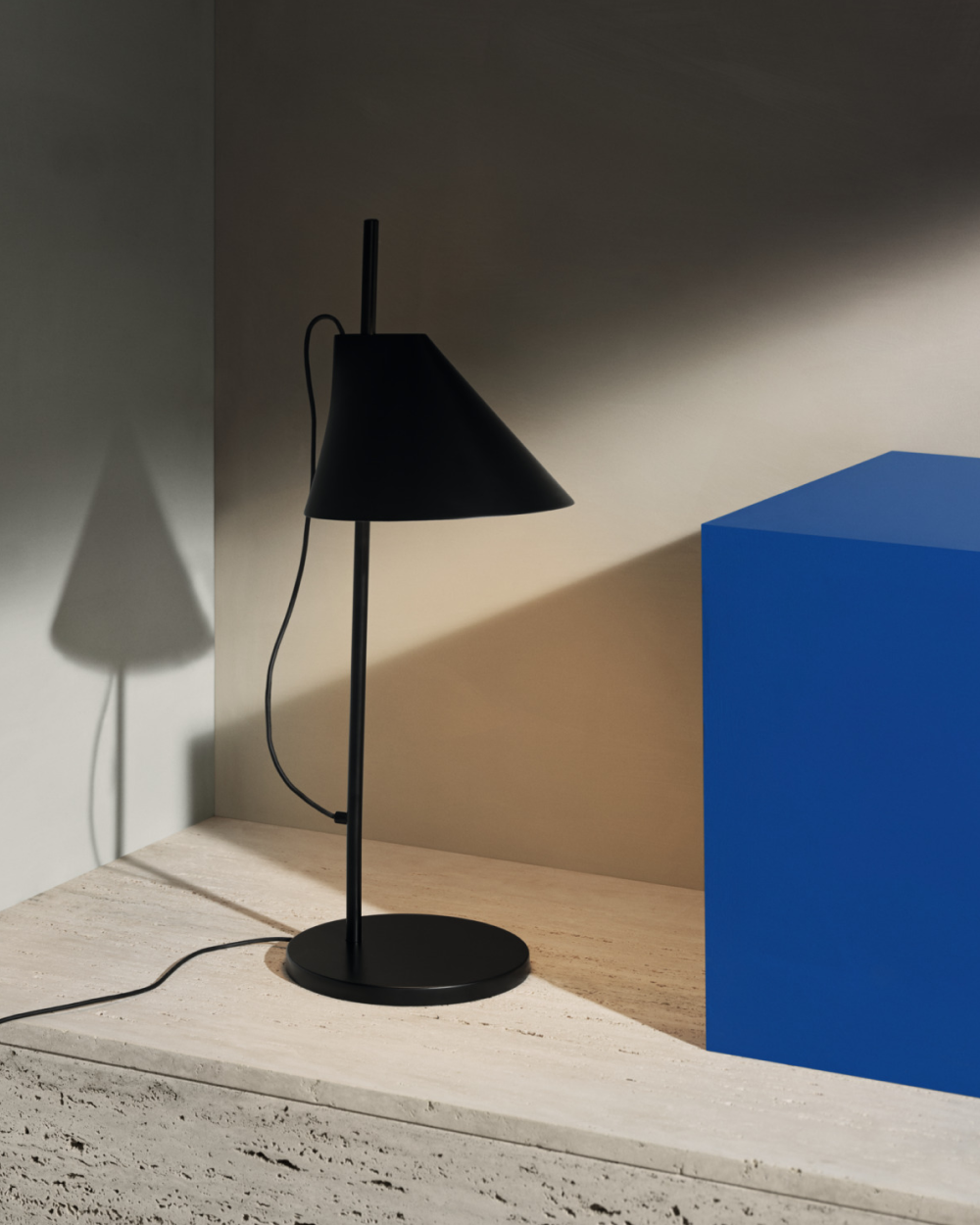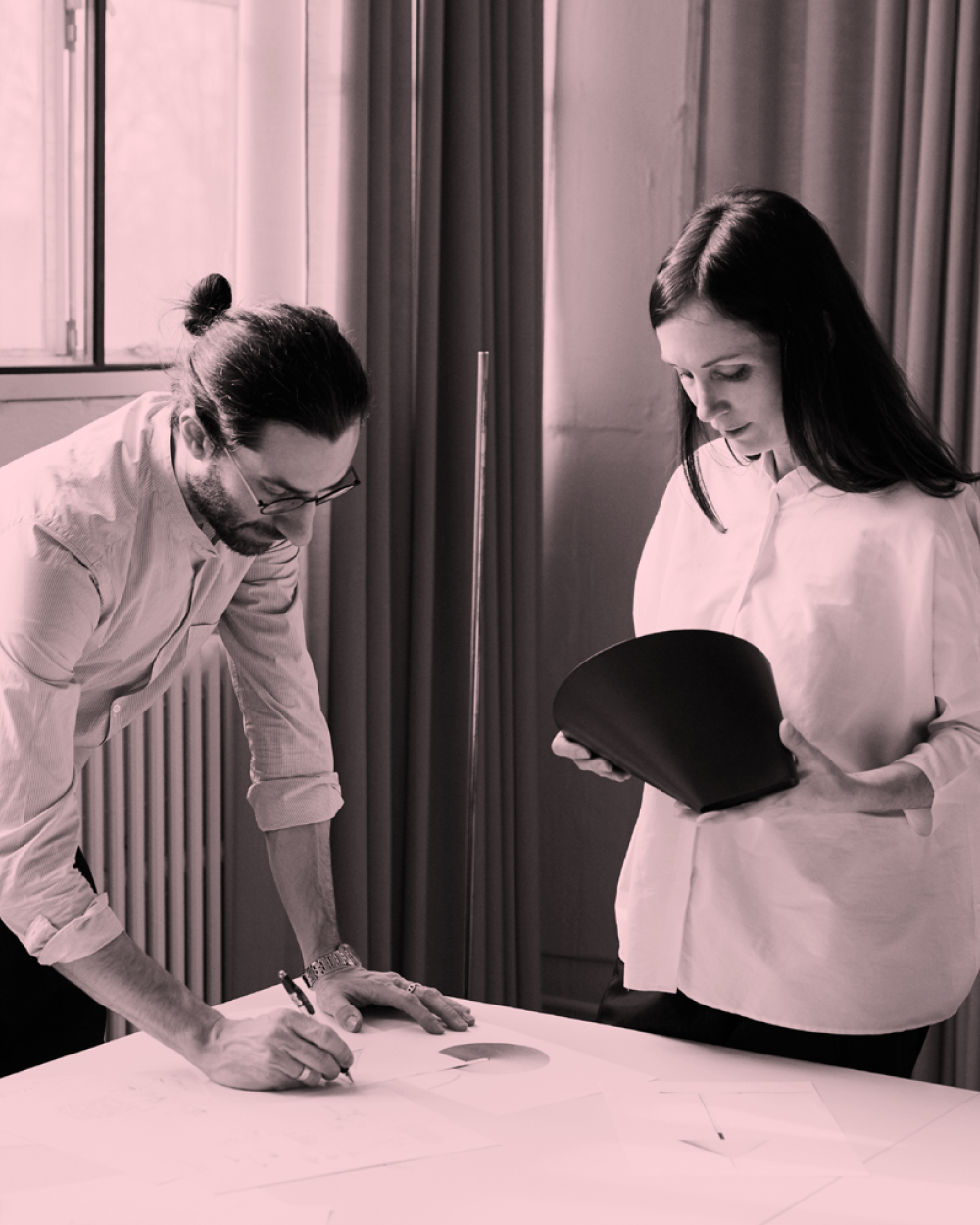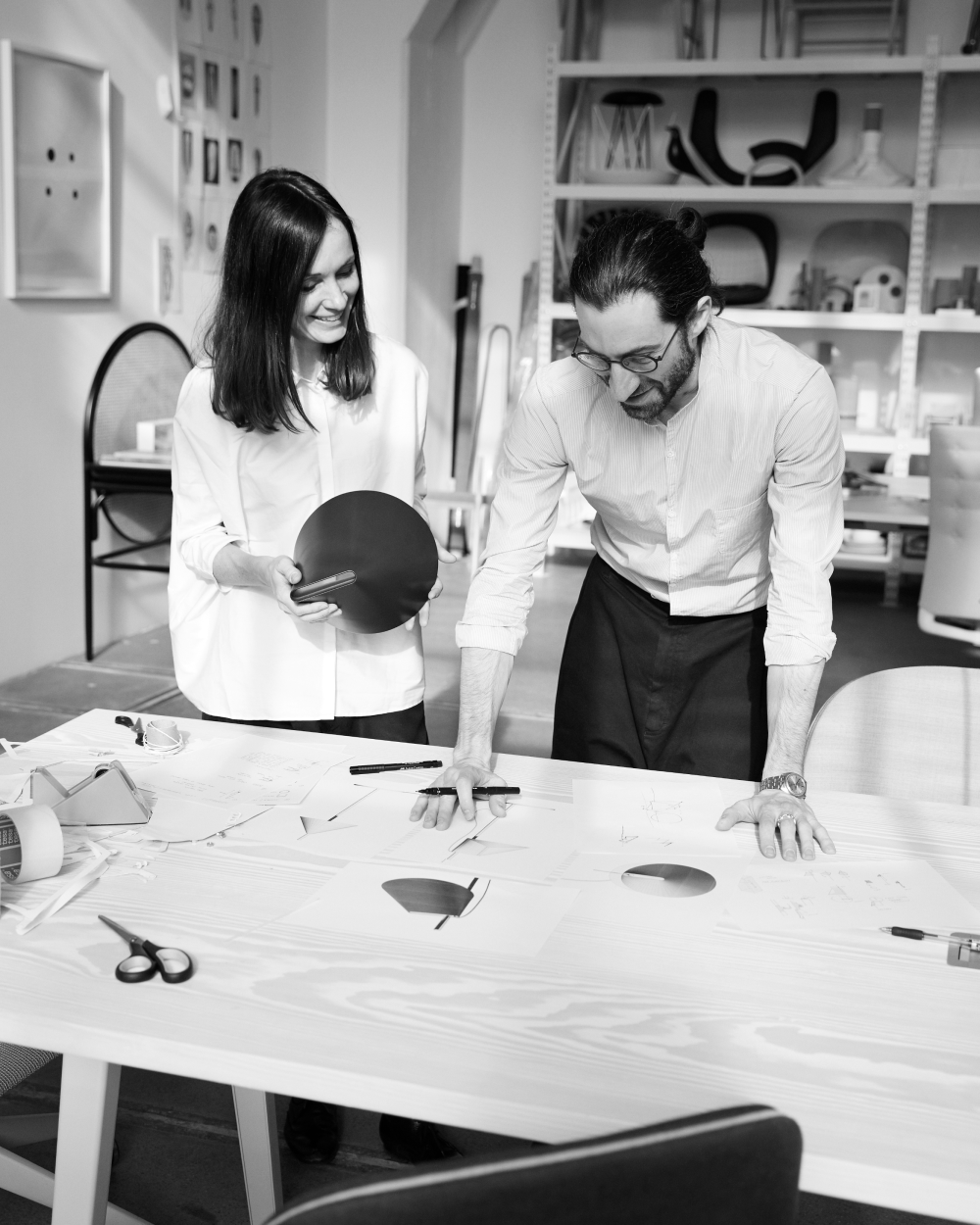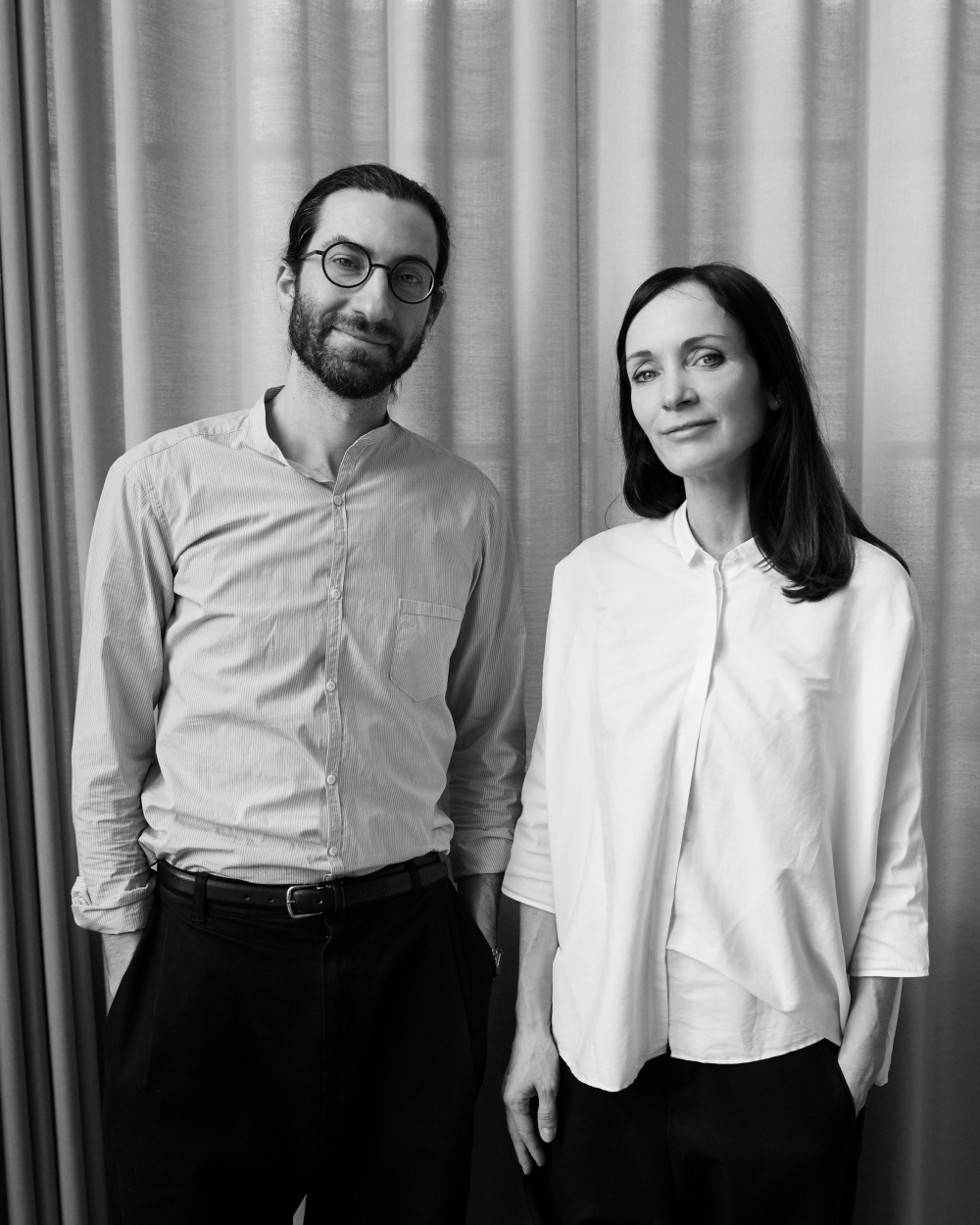What requirements did Louis Poulsen make regarding the lamp you were asked to design?
Enrico Fratesi: “The only formal requirement was that it needed to be a table and a floor lamp. After that, we were told that the lamp should not be for the office, but for using throughout the home. It had to be both decorative and functional. And even though the lamp might be a very complex product, it was important that the user was not aware of this complexity. That was the brief we were given, and then we set to work .”
What is usually the next step in your working process?
Stine Gam: “We spent a lot of time discussing the design and made lots of sketches and brainstormed numerous ideas. In this instance, we discussed the different functions of the lamp, the degree of technology we wanted to integrate into it and the simplicity we were aiming for. Our aim was to strike a balance between the two. It was also important for us that the lamp conveyed something about the Louis Poulsen story, and also about GamFratesi. When commissioned by a company with such a strong history as Louis Poulsen, it is important for us that this is reflected in the product.”
Enrico Fratesi: “Louis Poulsen is the master of the universe in terms of their research into illumination, and we wanted to honour this fact. We didn’t just want to produce a nice shape.”
In designing Yuh, what inspired you?
Stine Gam: “We are very inspired by the AJ lamp (designed by Arne Jacobsen, Ed.). There is something very striking about its geometry. It is angled, but the shade is designed in such a way that one part of it is always aligned with the floor in one way or another. It is extremely sculptural, but also very geometric.”
Enrico Fratesi: “It’s a piece of architecture”
Stine Gam: “The shape of the foot harmonises with that of the shade. The two are directly in proportion with one another ... there is something almost mathematical about it. We have also been greatly inspired by the PH lamp (Poul Henningsen, Ed.), but this is largely as far as the light quality is concerned.”
What was the decisive breakthrough in deciding on the design of the lamp?
Stine Gam: “We arrived at the basic design quite quickly. It was based on a mathematical formula. It’s not always the case that it’s like this, but it was this time. We took the horizontal line from the shade on the AJ lamp, and once that was drawn, everything else almost fell into place. It all went extremely quickly, but then it took an extremely long time finalising the details. It had to function as a table and floor lamp, but then we discovered that it could also be used as a wall lamp.”
Enrico Fratesi: “Our biggest challenge was to design the lamp so that it could be moved in several directions. We almost drove the engineers at Louis Poulsen crazy. Six men were assigned to the task. We worked with three different types of movement in the axis: inclination, rotation and up and down. This made it very complex. It was a huge challenge, but there is a fantastic team of engineers at Louis Poulsen with whom we had a very good working relationship. We were invited to a meeting which was also attended by the company’s marketing team and designers, so that everyone could hear about our basic idea with the lamp. There were a couple of meetings like this during the entire process. The engineers then came back to us with lots of technical parts, which we then assessed, and that’s how it proceeded until we arrived at the final product.”
Are your different design traditions reflected in the lamp?
Enrico Fratesi: “For us it is an integrated part of the design process, so it is difficult to say whether this or that detail is based on this or that tradition. But the sense of simplicity and the respect for the illumination’s authenticity is Danish.”
Stine Gam: “Our desire to incorporate a diffuser in the lamp stems from our respect for Poul Henningsen’s studies. And from our appreciation of indirect light. We like the fact that you do not see the light bulb, and are not dazzled. Italian lamp design is often quite the opposite: expressive lamps with bare bulbs. With a diffuser, the light source is concealed, which we think makes the illumination rather magical.”
Enrico Fratesi: “The Italian approach always involves pushing the boundaries of design. In this case, we wanted to create something that Louis Poulsen had never made before, and here I am referring to the complex technical challenge of incorporating an up-down movement. We wanted to bring Louis Poulsen forward in this way. However, while still respecting the company’s DNA: its colours, shapes and indirect light.”
Stine Gam: “Italians take great pride in their inventions. They embrace technical challenges – especially when there is an element of innovation.”
Do you, Enrico, represent the Italian tradition, and you, Stine, the Danish tradition in your products?
Stine Gam: “Not quite, because sometimes you can see something else in the other person’s culture, because you are looking at it from the outside. But in many respects it is probably me who provides the Danish input – the rationalist, the considered, the analysing approach. I always want to think through the process one more time, whereas Enrico is probably more dynamic, and wants to develop the look more. While I am constantly pulling on the reins slightly, he is wanting to urge things forwards. But I think you could say that we are archetypes for our own cultures.”
Do you use anybody else as a sounding board apart from yourselves and the customer?
Stine Gam: “No, our work – furniture and lighting – is almost an obsession for us. We talk a lot about it. And we spend a great deal of time thinking about it.”
Enrico Fratesi: “It has almost always just been the two of us, so it would probably be difficult for anyone else to be part of the process. We understand each other implicitly without having to put everything into words. We understand each other’s sketches, even when they have been dashed off very quickly and are unclear to other people. We are also very different, so it doesn’t mean that we can’t discuss things, but at the end of the day we always know which route to take. It would be almost impossible for an outsider to play a role in this process.”
Stine Gam: “We are very aware that furniture design must have a long lifetime, so it is a big responsibility designing a lamp like this. It must be able to stand the test of time, which is why we devote so much attention to every detail. It is different with an exhibition, which might last for a week or so – then you can be more expressive. A piece of furniture calls for more precision and a critical approach.”
You are a couple in your private lives: Do you have any rules about not working when you are at home?
Stine Gam: “No, and it actually seems to work OK. We often sit and discuss a particular detail over the dinner table, and once the children are in bed, our attention might return to a small screw, for example, that needs refining – it’s like this all the time. However, it is wonderful when your partner really understands what you are doing and is also able to apply their mind to it.”
GamFratesi have designed the Yuh lamp concept for Louis Poulsen. The concept comprises a table lamp, a floor lamp and a wall lamp, which are all available in white or black.
